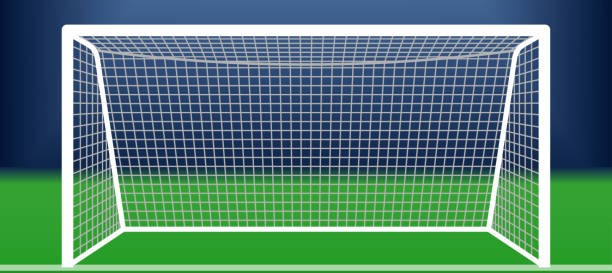













THE REMAINING RULES OF FOOTBALL.

Football has several additional rules beyond those governing fouls, handball, and offside. These rules cover aspects such as how the game is
played, substitutions, free kicks, penalties, and the roles of referees and other officials. Here is a comprehensive explanation of the
remaining key rules in football, based on the Laws of the Game as governed by FIFA:
The Field of Play:
-
The football field (pitch) must be rectangular and meet specific dimensions:
▫ Length: Between 90m (100 yds) and 120m (130 yds).
▫ Width: Between 45m (50 yds) and 90m (100 yds).
▫ The field is divided into two halves with a center circle and goals at each end.
▫ The penalty area, goal area, and corner arcs are marked, with specific dimensions determining where penalty kicks and goal kicks are taken.
The Ball:
-
▫ A football ball must be spherical, made of suitable materials, and have a circumference of 68–70 cm (27–28 inches). It must weigh 410–450 grams (14–16 ounces).
▫ A match is played with a standard ball, and replacements are allowed if the ball becomes damaged.
The Number of Players:
-
A football match is played between two teams of 11 players each, one of whom is the goalkeeper.
▫ If a team has fewer than 7 players, the match is abandoned.
▫ A team can have substitute players (usually 3–5 in professional matches) who can be brought on during the game.
Substitutions:
-
▫ Teams can make a limited number of substitutions (typically 3–5) during a match. In some competitions, an additional substitution is allowed during extra time.
▫ A substituted player cannot return to the game once they’ve been replaced (except in youth or amateur leagues where “rolling” subs may be allowed).
▫ Substitutions can only occur during a stoppage in play, with the referee’s permission.
The Referee and Other Officials:
-
▫ The referee has full authority to enforce the Laws of the Game, and their decisions are final.
▫ They can stop, suspend, or abandon the match for rule violations or safety concerns.
▫ Referees also have the authority to discipline players, issuing yellow and red cards for misconduct.
▫ Assistant referees (linesmen) assist in decisions, particularly in calling offside, throw-ins, and goal kicks.
▫ The fourth official manages substitutions, keeps time, and assists the referee.
▫ Video Assistant Referees (VAR) assist in reviewing key decisions (e.g., goals, penalties, red cards) when technology is available.
The Duration of the Match:
-
▫ A standard football match lasts for 90 minutes, divided into two 45-minute halves.
▫ There is a 15-minute halftime break between halves.
▫ Added time (stoppage time) is added to the end of each half to make up for lost time due to injuries, substitutions, or other stoppages.
Extra Time:
-
▫ In some knockout competitions, if the match ends in a draw after 90 minutes, it may go to extra time: two additional periods of 15 minutes each.
Penalty Shootouts:
-
▫ If a match remains tied after extra time, a penalty shootout may be used to determine the winner. Each team takes five penalty kicks, and the team that scores the most wins. If still tied, the shootout proceeds to where players shoot alternately until one team misses and the other scores.
Kick-off:
-
▫ The game starts with a kick-off from the center circle. The same occurs after a goal is scored, at the start of the second half, and before extra time (if played).
Drop Ball:
-
▫ A drop ball occurs when the game is stopped for reasons unrelated to fouls, like an injury or a ball striking the referee. The referee drops the ball to the players to resume play.
Throw-ins:
-
▫ When the ball completely crosses the sideline (touchline), the team that didn’t touch it last is awarded a throw-in from where the ball left the field.
▫ The thrower must use both hands to throw the ball from behind their head and keep both feet on or behind the line when releasing the ball.
Goal Kicks:
-
▫ A goal kick is awarded when the ball crosses the goal line (outside the goal) and was last touched by an attacking player. The defending team’s goalkeeper (or another player) kicks the ball from the goal area.
Corner Kicks:
-
▫ A corner kick is awarded when the ball crosses the goal line (outside the goal) and was last touched by a defender. The attacking team takes the kick from the corner arc nearest to where the ball went out of play.
Scoring Goals:
-
▫ A goal is scored when the entire ball crosses the goal line between the goalposts and under the crossbar, provided no rule violations occurred.
Own Goals:
-
▫ If a player accidentally scores into their own goal, it counts as a goal for the opposing team.
Direct Free Kick:
-
▫ A direct free kick is awarded for serious fouls such as kicking, tripping, or handball. The player taking the kick can score directly without the ball touching another player.
Indirect Free Kick:
-
▫ An indirect free kick is awarded for less serious offenses (e.g., obstruction, offside, or goalkeeper infractions). The ball must touch another player before a goal can be scored.
Penalty Kicks:
-
▫ A penalty kick is awarded when a defending player commits a foul inside their own penalty area. The ball is placed on the penalty spot, 12 yards from the goal, and the attacking player shoots one-on-one against the goalkeeper.
Goalkeeper Rules:
-
▫ Goalkeepers can handle the ball within their penalty area. However, they must release the ball within six seconds and cannot handle a ball that was intentionally passed to them by a teammate’s foot or from a throw-in.
▫ The goalkeeper is not allowed to pick up the ball if it was deliberately kicked to them by a teammate. If they do, an indirect free kick is awarded to the opposing team from the spot of the infraction.
Yellow Cards:
-
▫ A yellow card is a caution given for unsporting behavior, persistent fouling, delaying the restart of play, or dissent.
Red Cards:
-
▫ A red card is given for serious foul play, violent conduct, or receiving a second yellow card. A player shown a red card must leave the field, and their team must play with one fewer player.
Serious Offenses:
-
▫ Serious offenses like violent conduct, or using offensive language result in an immediate red card.
Advantage Rule:
-
▫ Referees may choose to play advantage and allow play to continue after a foul if stopping the game would harm the attacking team’s opportunity to score. If no advantage materializes, the referee can call the foul later.
Officiating with VAR:
-
▫ In leagues and competitions that use VAR (Video Assistant Referee), certain decisions can be reviewed, such as goals, penalties, red cards, and mistaken identity. VAR helps correct clear and obvious errors, but the on-field referee makes the final decision after reviewing video footage.
Summary of Football Rules:
-
▫ Football is governed by 17 Laws of the Game, designed to ensure fairness and enjoyment.
▫ Players must adhere to rules on scoring, substitutions, fouls, and restarts.
▫ Referees enforce the rules, with assistance from technology like VAR to ensure correct decisions are made.
Understanding these rules helps players, fans, and officials ensure a fair and exciting game.




























